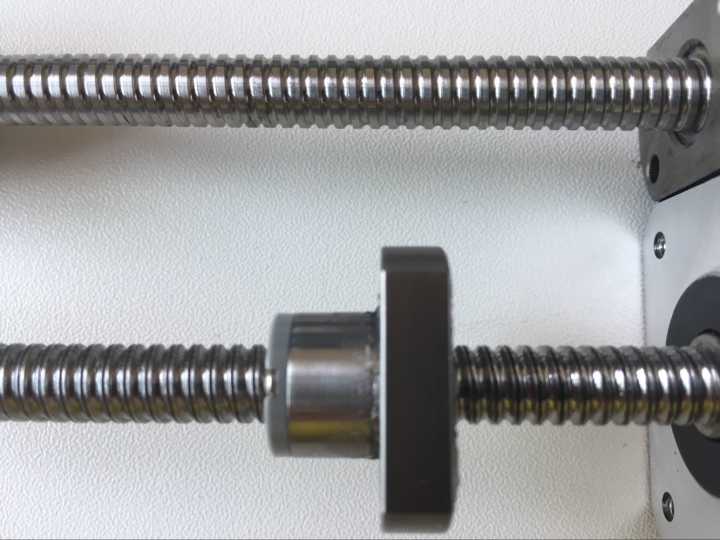Stepper Motor Linear Actuator
Last week we talked about the stepper motor, and this week we want to go further about the topic which will be stepper motor linear actuator or linear stepper motor.
There are three types of linear stepper motors and we are talking about the integrated stepper motor linear actuators, they are External Drive, Non-captive and Captive Linear Steppers.
Haydon Kerk a linear motion specialist provide worldwide engineers, makers and manufacturers of machines or equipment with linear actuator products. Thereinto stepper motor linear actuator is one of the main category that Haydon Kerk does. DINGS Motion founder Mr. Ding has been the General Manager of Haydon Kerk China. And DINGS becomes the leader manufacturer of China Stepper Motor Linear Actuator. Out of DINGS, RobotDigg empower engineers and equip makers with Stepper Motor Linear Actuator for 3D Printer, Pick and Place Machine, CNCs, machines and equipment etc.
Captive Linear Stepper Motor
It’s quite different from other two types External Drive and Non-captive. Captive Linear has limit stroke, the popular are 12.7mm (0.5’’), 19.05mm, 25.4mm(1’’), 31.8mm, 38.1mm, 50.8mm and 63.5mm. The lead screw is limited by the Captive Sleeve. And it seems like a kind of real linear actuator. Engineers do Not care too much about the diameter, pitch or lead of the lead screw but the Stroke. After the crisis of SAMSUNG Phone, charge-discharge test on the battery in circles is a Must to all most of the Smart Phones in the market. The Captive Linear Stepper Motor is key item of automation solution for the task.
External Drive and Non-captive Linear Stepper Motors
To name it as External Drive is mainly because that the linear motion is result out of the Lead Screw and the Nut, the load is carried by the Nut.
Non-captive, the lead screw goes through the stepper motor and there is screw inside of the motor body which used to convert the rotary motion into linear motion. The mounting method is different with the External Drive. The load is on one end of the lead screw, ball screw or the motor body (Free rotary motion both ends of the lead screw using ball bearing support unit.)
RobotDigg do provide Nema23 and Nema34 Non-captive Ball Screw Stepper Motor Linear Actuator, there is a planetary gearhead alike box in front of the stepper motor and the Ball Screw Nut is put in there to carry out the transmission from rotary to linear.
Lead screw, ball screw and Nut

Ball screws use rolling rather than sliding like lead screws. This means ball screws are more efficient than lead screws and do not need much driving torque.
High quality precision lead screws have the additional advantage of being exceptionally quiet and easy to get. So they're acceptable in nontraditional application on medical device or lab equipment in doctors' offices, and in many new rapid-prototyping technologies.
In China, lead screw are Not only cost inexpensive but quite easy to get other than the high quality ball screw either rolled or ground. Ball screw mostly used in China are from Taiwan or Japan like HIWIN, TBI and THK, especially the ground ball screw. Rolled ball screws certainly cost less and there are China Copies. Self-locking is Not really the unique of the lead screw, it needs to see the pitch of the lead screw. And in today’s lead screw technique, grease to lubricate the lead screw and nut is adopted.
Acme screws are available in a variety of diameters and leads. Metric versions, commonly called trapezoidal screws, are also available. Although English and metric designs have similar tooth shapes.
Bronze vs Delrin or POM, Anti-backlash or Zero-backlash Nut
Common nut materials include self-lubricating plastics, polymers, and metals such as brass or bronze. Nonmetallic materials generally have higher efficiency due to lower coefficients of friction and often do not require lubrication. Metal nuts such as bronze can handle higher working loads but may be much more noise, easy to wear out and require lubrication.
Wear characteristics of ACME nuts depend on nut material, environment, lubrication, and the application. The amount and rate of wear is generally not easy to predict due to the large number of variables. But to compensate for wear, some manufacturers build lead nuts out of two halves biased to each other with a spring to compress or tension. Nuts using this design are commonly referred as anti-backlash or zero-backlash Nut.
Reference link:
https://blog.helixlinear.com/bid/224687/Lead-Screws-vs-Ball-Screws-It-s-All-about-the-Application
https://www.machinedesign.com/motion-control/critical-look-acme-ball-and-roller-screws-linear-motion
https://www.machinedesign.com/archive/ballscrews-vs-lead-screws